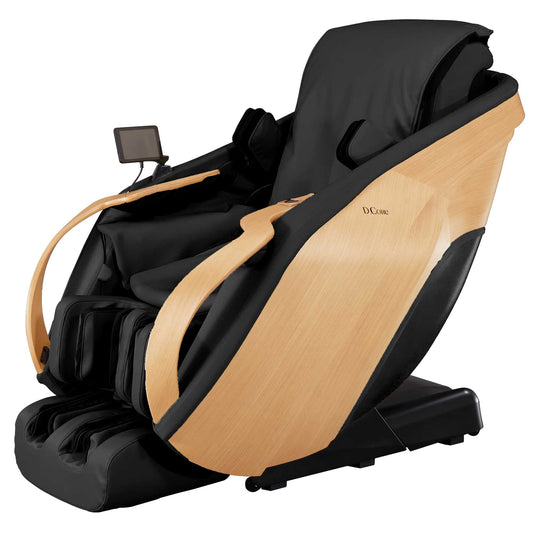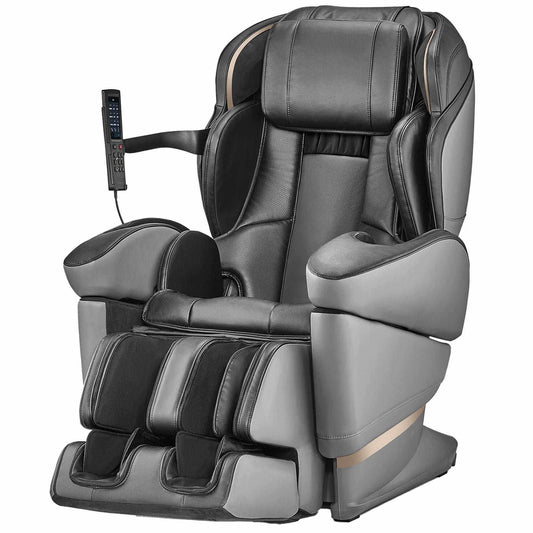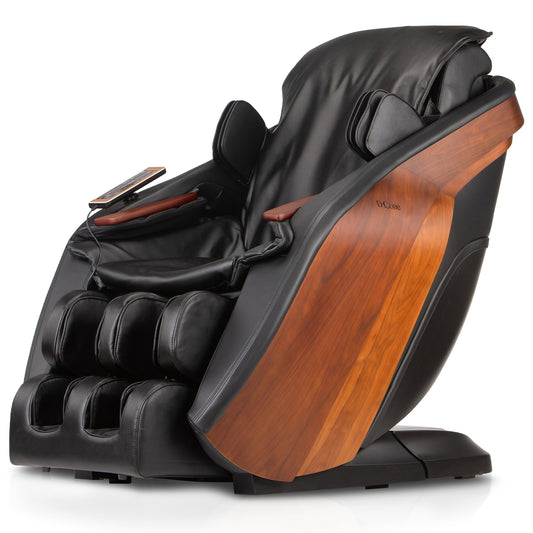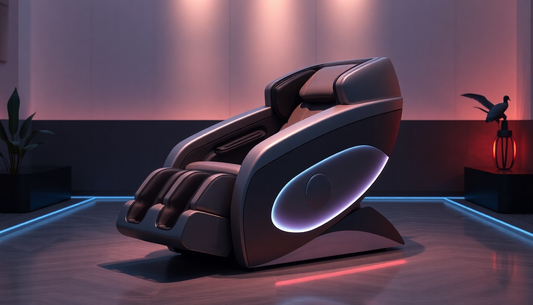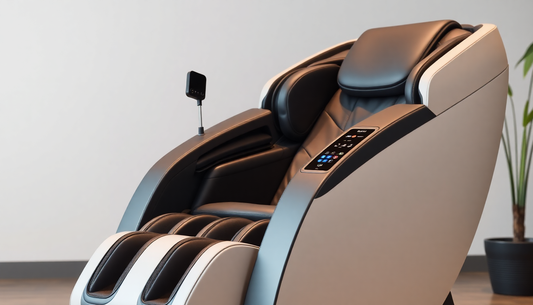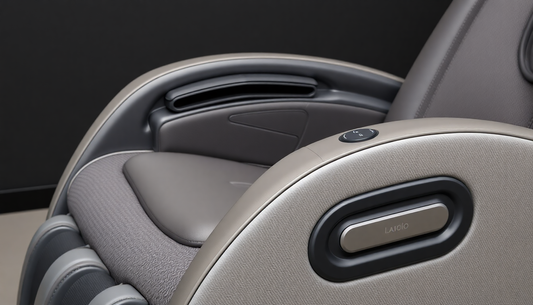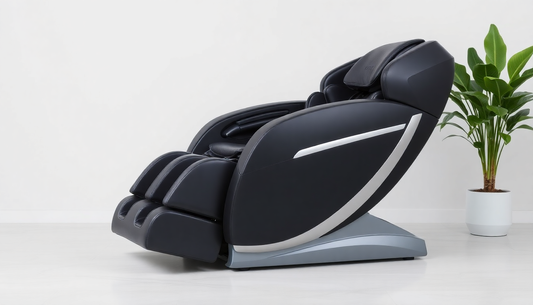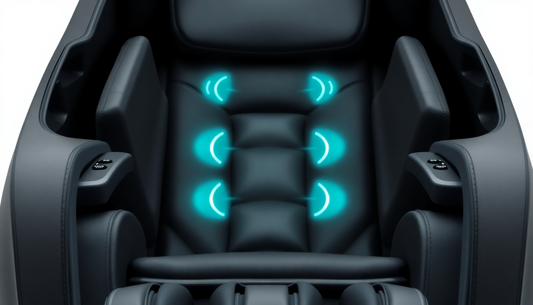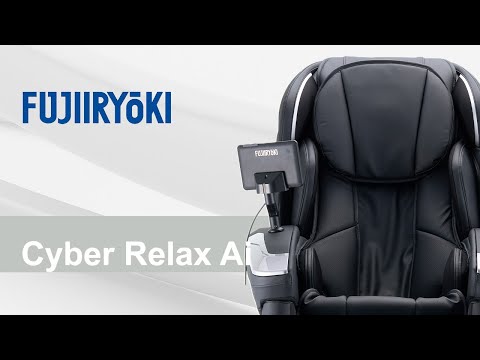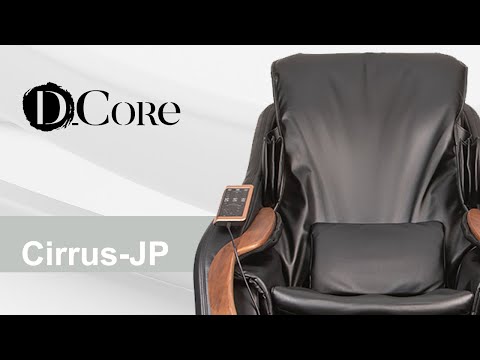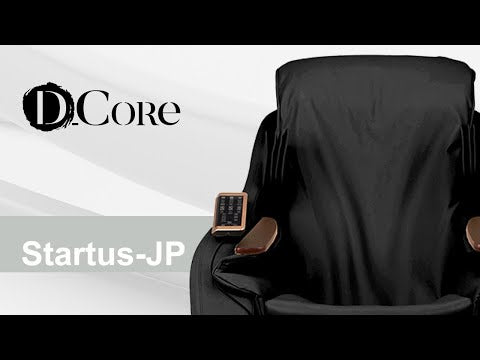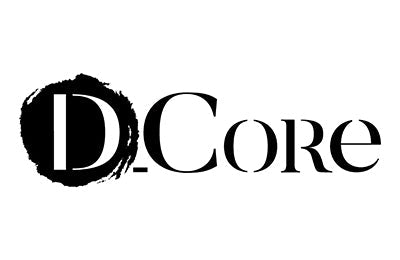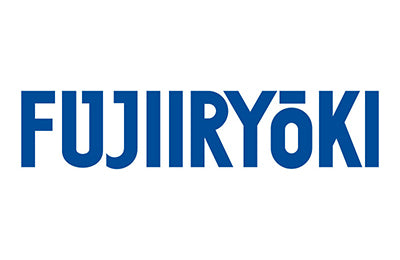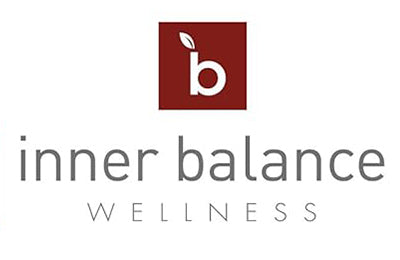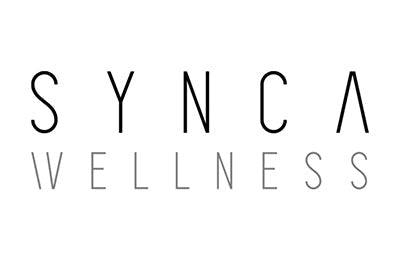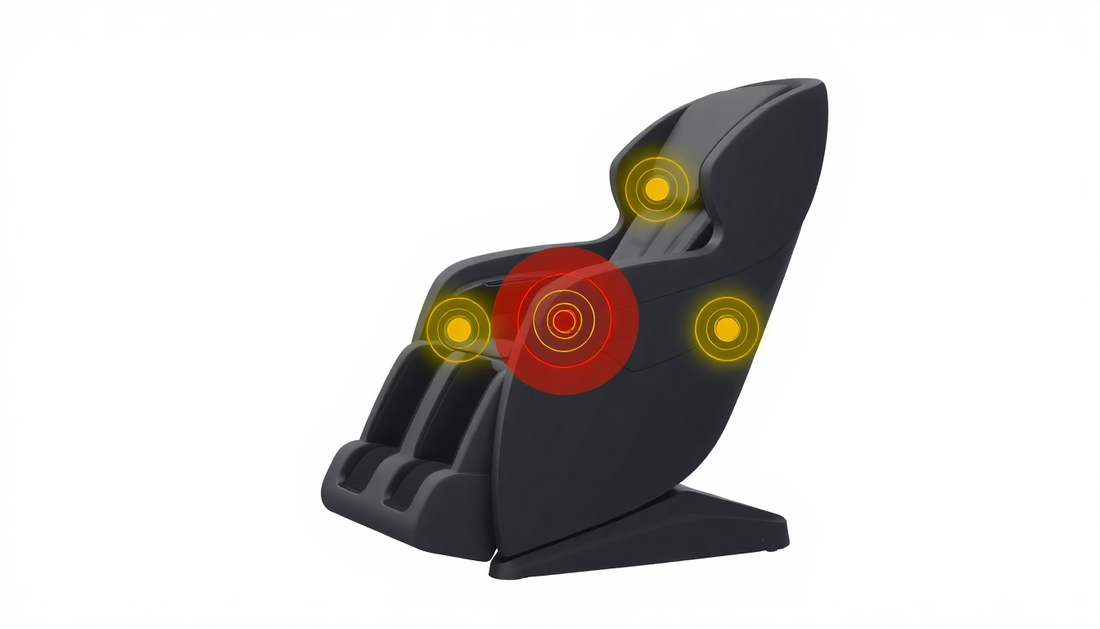
Discover the Fujiiryoki Massage Chair Therapeutic Benefits
Introduction: A 4-Day Roadmap to Choosing the Right Fujiiryoki Massage Chair
This extended, SEO-focused four-day presentation provides an in-depth look at four Fujiiryoki massage chair models: Calm Plus, Cyber Relax AI, Cyber Relax Pro, and Cyber Relax Elite. Each day focuses on one model with practical session plans, step-by-step techniques for specific target zones, detailed therapeutic benefit mapping, safety and contraindications, maintenance and buying guidance, and tips to maximize results whether you want daily relaxation, therapeutic recovery, or elite performance recovery.
Why Read This Guide
- Comprehensive model-by-model analysis that helps match features to goals.
- Actionable session plans and technique mappings for feet, neck, back and whole body.
- Expanded sections on safety, maintenance, buying considerations, and how to optimize results.
SEO Keywords to Look For
Fujiiryoki, Calm Plus, Cyber Relax AI, Cyber Relax Pro, Cyber Relax Elite, massage chair, deep tissue, shiatsu, reflexology, trigger point, spine alignment, pain relief, sports recovery, therapeutic massage chair.
Day 1 — Calm Plus: Everyday Comfort, Recovery & Gentle Restoration
Overview and Positioning
The Calm Plus is Fujiiryoki’s comfort-first offering that emphasizes soothing Swedish-style strokes, gentle kneading, and accessible reflexology. It is ideal for users who want daily relaxation, mild pain relief, improved circulation, and low-intensity recovery without complex programming.
Massage Techniques Available
- Swedish Massage: Long flowing strokes to encourage circulation and parasympathetic activation.
- Shiatsu: Pressure-point sequences to ease neck and shoulder tension.
- Reflexology: Foot rollers and heel-specific mechanisms to stimulate nerve endings in the feet.
- Kneading: Rhythmic circular motions to loosen tight calves, thighs, and shoulder muscles.
Target Zones and Specific Protocols
- Feet, Heel, Ankle: Start with 3 to 6 minutes of reflexology and heel rollers, then add gentle kneading for the calf-plantar complex to reduce plantar tension.
- Calf & Thighs: Use mild kneading and Swedish sequences to improve venous return and ease muscle tightness after standing or walking.
- Neck, Shoulder & Head: Employ shiatsu and light kneading, focusing on cervical and upper trapezius areas for tension headaches and posture-related tightness.
- Back & Whole Body: A combined program that alternates Swedish strokes and light shiatsu across the lumbar, thoracic and cervical regions for full-body relaxation and spine-friendly decompression.
Sample Session Plans
- Morning Energizer (15 minutes): Light foot reflexology, calf kneading, short neck shiatsu to stimulate circulation and reduce stiffness upon waking.
- After-Work Unwind (25 minutes): Full back Swedish sequence, shoulder shiatsu, and 5-minute reflexology for systemic relaxation.
Expected Therapeutic Benefits
- Stress Relief and Nervous System Balance: Gentle, consistent stimulation may encourage relaxation responses.
- Fatigue Relief and Circulatory Support: Foot reflexology and calf kneading help lower perceived leg fatigue and support venous return.
- Spine-Friendly Relaxation: Progressive lumbar kneading and light traction support posture and can ease discomfort when used regularly.
Best Use Cases
- Daily stress management, morning activation, and gentle recovery after light exercise.
- Those who prefer soothing, comfort-oriented massage over intense therapeutic pressure.
Day 2 — Cyber Relax AI: Intelligent Customization and Precision Targeting
Overview and Positioning
Cyber Relax AI integrates body scanning, adaptive algorithms, and sensor-driven intensity adjustment to deliver more personalized sessions than entry-level models. The AI identifies tension hotspots and adapts pressure and technique selection to user anatomy and feedback.
Massage Techniques Available
- Deep Tissue Massage: Focused, adjustable pressure for chronic myofascial tightness.
- Trigger Point Massage: Short, firm pressure bursts to release nodules and knots.
- Acupressure: Timed point pressure based on meridian concepts to aid systemic balance.
- Shiatsu and Kneading: Blended sequences for layered relaxation and muscular release.
Target Zones and Step-by-Step Protocols
- Neck & Head: Allow the AI scan for baseline tension, then run a trigger point-focused neck program for 8–12 minutes to reduce cervical hypersensitivity and headaches.
- Upper Back & Shoulders: Use adaptive kneading and trigger point bursts to address desk-job posture strain; concentrate 12–18 minutes on the upper trap and rhomboid area.
- Lower Back & Spine: Deep tissue combined with targeted acupressure and mild traction to relieve lumbar stiffness without overstressing intervertebral structures.
- Hands & Wrists: Short reflexology-style and kneading programs to improve local circulation and relieve repetitive strain symptoms.
Practical Session Plans
- Focused Pain Relief (30–40 minutes): AI body scan, focused trigger point and deep tissue work on mapped hotspots, finishing with light Swedish strokes to rebalance tissues.
- Pre-Event Activation (20 minutes): Short, dynamic deep tissue sequences to prime muscles before sports or physical activity.
Therapeutic Benefits and Evidence-Based Rationale
While home massage chairs are not a substitute for hands-on clinical care, AI-assisted targeted therapy can:
- Reduce localized pain intensity by mechanically disrupting myofascial adhesions and encouraging blood flow to constricted tissues.
- Improve short-term range of motion by releasing tight muscle fibers and reducing protective guarding.
- Support injury recovery when used in conjunction with clinical guidance, by modulating intensity and limiting overload.
Best Use Cases
- Users with recurring, localized pain seeking an adaptive solution.
- Athletes who want targeted recovery sessions tuned by AI mapping.
Day 3 — Cyber Relax Pro: Professional-Level Intensity and Rehabilitation Support
Overview and Positioning
The Cyber Relax Pro is aimed at users wanting strong mechanical pressure, advanced program options, and targeted therapeutic features that approach professional-grade treatment. It’s well-suited for chronic conditions, post-exercise recovery, and users who prefer firmer therapy.
Massage Techniques Available
- High-Intensity Deep Tissue: Robust rollers and firmer kneading sequences for deep myofascial release.
- Trigger Point Therapy: Programmable spot therapy to sustain pressure over stubborn knots.
- Shiatsu and Acupressure: Firm sequences to simulate hands-on clinic techniques.
- Reflexology & Aggressive Kneading: Enhanced foot and calf modules for systemic recovery.
Target Zones and Protocols for Rehabilitation
- Back & Lumbar Focus: Begin with low-intensity warm-up, progress to deep tissue and sustained trigger point pressure on the lumbar paraspinals, gluteal region, and hamstrings to help with posterior chain tightness associated with low back pain.
- Thighs & Knees: Programmed deep kneading on quadriceps and IT band areas, combined with calf work, for running-related tightness and knee comfort.
- Whole Body: Progressive, multi-zone sessions that focus on systemic recovery — start distal (feet) and work proximally to encourage venous return and neural relaxation.
Practical Session Plans
- Rehab Support Session (40–50 minutes): Warm up at low intensity, main phase with progressive deep tissue and trigger point targeting, cooldown with reflexology and light acupressure.
- Sports Recovery (30–45 minutes): Quick activation and focused deep tissue on major muscle groups used in the sport, finishing with compression and circulation sequences.
Therapeutic Benefits and Clinical Considerations
- Muscle Therapy and Tissue Remodeling: Repeated, controlled pressure may aid in reducing adhesions and improving tissue pliability.
- Pain Relief and Functional Gains: When combined with exercise and clinical guidance, deeper mechanical therapy can reduce chronic pain and improve function.
- Note: High-intensity therapy should be introduced gradually and avoided over acute injuries or inflamed tissue without professional clearance.
Best Use Cases
- People with chronic musculoskeletal pain who tolerate firmer pressure and seek robust home therapy.
- Athletes and active users seeking more intense mechanical recovery between sessions of training.
Day 4 — Cyber Relax Elite: Flagship, Full-Spectrum Recovery and Luxury Therapy
Overview and Positioning
The Cyber Relax Elite integrates configurable intensity, full-body programs, traction, advanced compression, and hybrid technique sequencing to produce full-spectrum therapy for users seeking maximum therapeutic depth and luxury comfort.
Massage Techniques Available
- Combined Modes: Swedish, deep tissue, trigger point, acupressure, shiatsu, reflexology, and kneading blended in multisensory sequences.
- Traction and Decompression: Integrated traction phases to help with spinal unloading and disc space relief sensations.
- Whole-Body Compression: Sequential airbag compression to enhance lymphatic drainage and venous return.
Target Zones and Elite Protocols
- Whole Body: Start with a full scan, then execute a multi-phase program that moves from distal-to-proximal to encourage systemic circulation and relaxation.
- Spine & Lumbar Decompression: Use traction sequences followed by deep kneading and acupressure to manage chronic stiffness and support spinal comfort.
- Feet/Heels: Advanced reflexology patterns plus heel rollers to alleviate plantar discomfort and support balance in gait-related issues.
Practical Session Plans
- Elite Recovery (45–60 minutes): Full scan, vascular/lymphatic compression phase, deep tissue/trigger point phase, traction/decompression, then reflexology cooldown.
- Nighttime Reset (30–40 minutes): Gentle Swedish-focused full-body program to promote sleep onset and parasympathetic activation.
Therapeutic Benefits and Lifestyle Impact
- Comprehensive Pain Relief and Stress Reduction: Multi-technique sequencing targets structural, muscular, and neurological contributors to pain and stress.
- Enhanced Recovery & Performance: Compression and decompression phases can improve perceived recovery and reduce DOMS when used after high-intensity sessions.
- Long-Term Wellness: Regular use may support improved sleep, reduced perceived stress, and better daily functioning.
Cross-Model Comparison and How to Choose
Use this quick decision guide to match your priorities with the right Fujiiryoki model:
- Calm Plus: Best for daily low-intensity relaxation, stress relief, and users who want simple programs.
- Cyber Relax AI: Best for users who want adaptive, sensor-driven personalization and targeted pain relief.
- Cyber Relax Pro: Best for therapy-oriented users who need higher-intensity, professional-level pressure.
- Cyber Relax Elite: Best for users who want full-spectrum, premium recovery sessions with advanced features like traction and compression.
Detailed Mapping: Techniques, Target Zones, and Likely Benefits
- Feet, Heel, Ankle: Reflexology, kneading, targeted rollers —> improved circulation, fatigue relief, reduced plantar pain, systemic relaxation.
- Calf & Thigh: Swedish, kneading, deep tissue (Pro/Elite) —> improved venous return, decreased stiffness, enhanced flexibility.
- Knee: Deep kneading and targeted trigger point —> pain modulation, support during recovery phases.
- Back & Spine: Deep tissue, acupressure, traction —> spine alignment support, reduced lumbar stiffness, improved posture comfort.
- Neck & Head: Shiatsu, trigger point release —> reduced headaches, neck stiffness, enhanced cervical mobility.
- Shoulder & Upper Back: Trigger point, kneading —> reduced muscle guarding, improved range and posture.
- Hands & Wrists: Kneading and reflexology —> reduced repetitive strain discomfort, improved circulation.
- Whole Body: Combination protocols —> systemic stress reduction, sleep improvement, whole-body recovery.
Safety, Contraindications, and When to Consult a Professional
- Consult a healthcare provider before using a massage chair if you have: recent surgery, fractures, deep vein thrombosis, severe osteoporosis, uncontrolled hypertension, implanted medical devices, or are pregnant.
- Avoid intense deep tissue/trigger point programs directly over acute injuries or inflamed tissue unless cleared by a clinician.
- If you experience increased pain, numbness, dizziness, or unusual symptoms during or after use, stop and seek medical advice.
- Start low and progress: Always begin sessions at lower intensity and increase gradually as tolerated.
Maintenance, Longevity, and Practical Ownership Tips
- Routine Cleaning: Wipe surfaces with a soft cloth and mild cleaner; avoid harsh solvents or soaking leather/vinyl components.
- Airbag & Roller Care: Use moderate frequency; refer to the user manual for recommended checks and cleaning cycles.
- Software & Firmware: Check for firmware updates for AI-enabled models to ensure adaptive programs remain optimized.
- Professional Servicing: Consider annual service checks for heavy-use environments and follow manufacturer warranty guidelines.
Buying Checklist: What to Compare Before You Purchase
- Primary Goal: Relaxation, therapeutic recovery, professional-level intensity, or premium full-body performance?
- Body Scanning & AI Features: Do you want a chair that customizes pressure and technique automatically?
- Intensity Range: Can it go firm enough for your needs? Does it offer gentle modes?
- Programs & Customization: Look for user-program memory slots and fine-tunable parameters for time, pressure, and zone focus.
- Physical Fit: Verify height and weight compatibility and available recline space in your home.
- Warranty & Support: Compare warranties, in-home service, and retailer reputation.
How to Maximize Benefits — Practical Tips & Pre/Post Session Habits
- Hydrate: Drink water before and after sessions to aid circulation and metabolic waste removal.
- Warm Up Before Deep Sessions: Light movement or a warm shower can prepare tissues for deeper work.
- Combine with Active Recovery: Stretching, foam rolling, and targeted strengthening complement mechanical massage for long-term gains.
- Consistency Beats Intensity: Regular, moderate sessions often produce more sustainable benefits than infrequent, very intense sessions.
Sample Weekly Plans for Different Goals
- General Wellness: 3–4 sessions weekly of 20–30 minutes each; alternate calming Swedish sessions with one targeted deep tissue session.
- Pain Management: 2–5 short AI or Pro sessions per week focused on mapped hotspots, coordinated with clinician advice.
- Athletic Recovery: Post-training 20–40 minutes with Pro or Elite settings focusing on affected muscle groups; include one full-body Elite recovery session weekly if available.
Troubleshooting Common Issues
- Chair Feels Too Intense: Lower intensity, choose a gentler program, or reduce session time.
- Unable to Reach Specific Spot: Use adjustable recline, manual zone selection, or consult the manual for body-scan recalibration.
- Noisy Operation: Check for obstructions, secure loose panels, and consult service if abnormal noises persist.
Warranty, Service and Accessories to Consider
- Extended Warranty: Consider extended coverage for motor and electronic repairs, especially for high-use situations.
- Protective Covers and Mats: Protect floors and chair upholstery from wear and spills.
- Add-ons: Some users benefit from supplementary tools such as hot packs, cooling pads, or targeted physical therapy accessories used outside of the chair.
Evidence and Realistic Expectations
Consumer massage chairs provide mechanical stimulation that often reduces perceived pain, improves relaxation, and may support circulation and short-term range of motion gains. However, they are complementary to professional medical and physical therapy care. For structural spinal issues, severe neurological symptoms, or complex medical conditions, consult qualified healthcare professionals.
Long-Form FAQ
- How often should I use each model? For Calm Plus, daily short sessions are appropriate. For Cyber Relax AI, 2–5 sessions a week depending on intensity and pain patterns. For Pro and Elite, schedule 2–4 sessions weekly with rest days between high-intensity sessions.
- Which model helps most with chronic back pain? Cyber Relax Pro and Cyber Relax Elite typically offer deeper therapeutic options and integrated traction that better address chronic back issues when used appropriately and in conjunction with clinical care.
- Are these chairs safe for older adults? Many older adults benefit from gentle programs. However, those with osteoporosis, fragile skin, uncontrolled chronic conditions, or cognitive impairments should seek medical clearance and consider lower-intensity settings.
- Will foot reflexology help plantar fasciitis? Reflexology and targeted heel rollers can reduce plantar pain for some users but are not a guaranteed cure. Combine with stretching, proper footwear, and clinician-guided interventions for best results.
Conclusion: How to Use This 4-Day Presentation to Decide
Use Day 1 through Day 4 to map your goals against product strengths. Calm Plus is ideal for daily comfort and stress relief; Cyber Relax AI is for adaptive, precision relief; Cyber Relax Pro is for stronger therapeutic input; and Cyber Relax Elite is for the most comprehensive recovery and luxury experience. Pair model capabilities with the target-zone protocol guides in this article to build personalized session plans that support pain relief, recovery, and long-term wellness.
Final Tips for Success
- Start slowly and monitor how your body responds over several weeks.
- Use the AI scan features frequently to keep personalization accurate.
- Coordinate with health professionals when treating chronic or acute conditions.
- Maintain your chair to preserve performance and warranty coverage.
Further Reading and Resources
- Check Fujiiryoki official manuals and model pages for up-to-date features and firmware updates.
- Read user reviews and independent product tests for long-term reliability insights.
- Consult peer-reviewed literature on massage therapy benefits for evidence-based context when combining chair use with clinical care.

